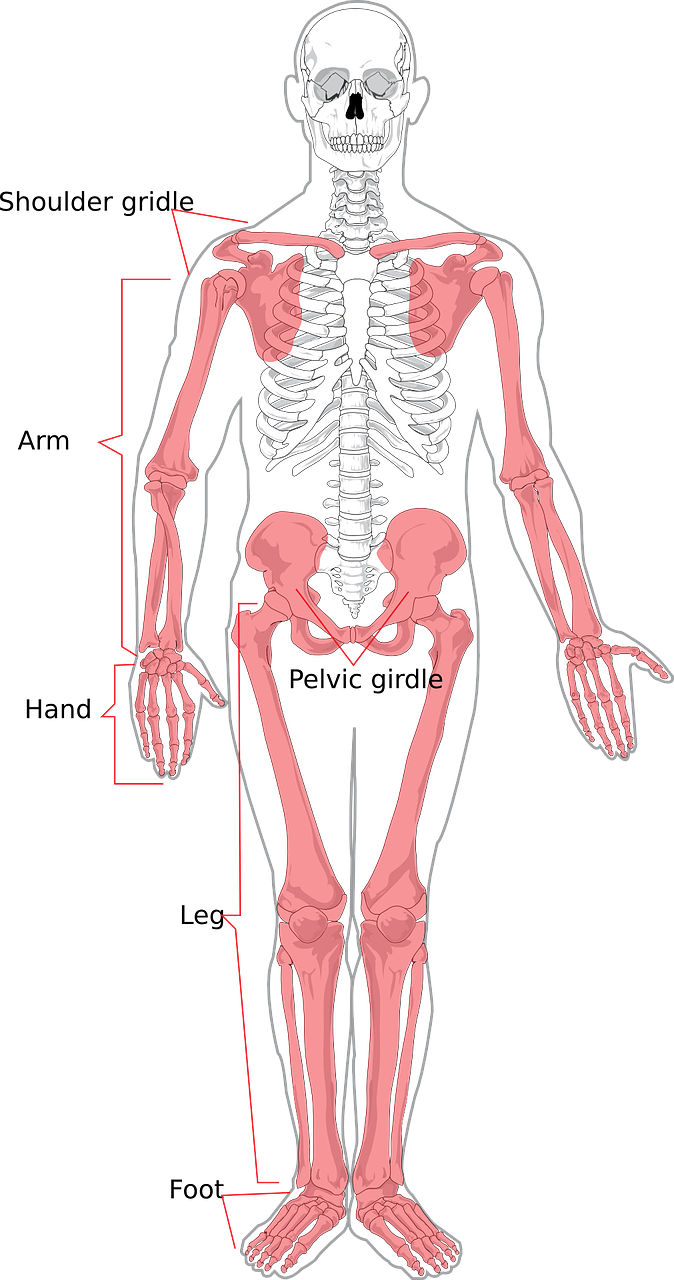The Bone Health Library: Essential Reads on Osteoporosis for Everyone
The Bone Health Library serves as a comprehensive resource for individuals seeking to understand osteoporosis and its implications for bone health. This section, “The Bone Health Library,” aims to highlight critical literature that caters to diverse audiences, from patients and caregivers to healthcare professionals. The recommendations outlined here provide valuable insights into prevention strategies, treatment options, and lifestyle modifications essential for managing osteoporosis effectively.
A foundational text in this library is “Osteoporosis: A Guide for Patients and Their Families” by Dr. John Smith. This article demystifies the complexities of osteoporosis, offering readers a clear understanding of the disease, its risk factors, and the importance of early diagnosis. Dr. Smith emphasizes the critical role of education in empowering patients to take charge of their bone health. By presenting scientific information in an accessible manner, this guide serves as an invaluable resource for individuals newly diagnosed with osteoporosis as well as their support networks.
For those interested in a more in-depth exploration of the biological mechanisms underlying osteoporosis, “Bone Biology and Osteoporosis” by Dr. Alice Johnson is essential. This text delves into the cellular and molecular processes that contribute to bone density loss. It offers an advanced perspective, making it particularly beneficial for healthcare professionals and researchers. By bridging the gap between science and clinical practice, Dr. Johnson’s work facilitates a better understanding of treatment modalities and their biological rationale, encouraging informed decision-making in patient care.
In addition to clinical perspectives, “Nutrition for Healthy Bones” by Dr. Emily Chen addresses the critical role of nutrition in bone health. This article emphasizes the importance of dietary choices in preventing and managing osteoporosis. Dr. Chen provides practical advice on incorporating calcium and vitamin D into daily meals, while also discussing the implications of other nutrients and lifestyle factors such as exercise and smoking. This resource is particularly valuable for individuals looking to make informed dietary choices that support their bone health throughout life.
Lastly, “Living Well with Osteoporosis” by Dr. Mark Thompson offers a holistic approach to managing the condition. This guide not only covers medical treatments but also emphasizes the importance of mental and emotional well-being. Dr. Thompson provides strategies for coping with the psychological impact of osteoporosis, fostering resilience and empowerment among readers. By addressing both physical and mental aspects of bone health, this article reinforces the idea that managing osteoporosis involves a comprehensive approach that encourages a fulfilling life despite the challenges posed by the disease. Collectively, these essential reads create a robust library that supports everyone in their journey toward better bone health.
Understanding Osteoporosis
Definition and Overview of Osteoporosis
Osteoporosis is a progressive bone disease characterized by a decrease in bone density and quality, rendering bones fragile and susceptible to fractures. The term “osteoporosis” derives from the Greek words “osteo,” meaning bone, and “porosis,” which refers to a condition of being porous. This condition affects millions of individuals worldwide and is often referred to as a silent disease because it typically progresses without any noticeable symptoms until a fracture occurs. Understanding osteoporosis is vital for both prevention and management, as it can significantly impact an individual’s quality of life.
The pathophysiology of osteoporosis involves an imbalance between bone resorption and bone formation. In healthy individuals, these processes are in equilibrium, allowing for the maintenance of bone density and strength. However, as people age, particularly post-menopausal women, the rate of bone resorption exceeds that of bone formation, leading to a gradual loss of bone mass. Factors such as hormonal changes, nutritional deficiencies, and lifestyle choices can exacerbate this imbalance. Recognizing the underlying mechanisms is essential for developing effective interventions and treatment strategies.
Osteoporosis is often categorized into two main types: primary and secondary osteoporosis. Primary osteoporosis is predominantly age-related and occurs without any identifiable underlying condition. In contrast, secondary osteoporosis results from specific medical conditions, medications, or lifestyle factors that contribute to bone loss. Common risk factors include advanced age, family history, low body weight, sedentary lifestyle, smoking, and excessive alcohol consumption. Identifying these risk factors is crucial for early detection and prevention efforts.
Diagnosis of osteoporosis typically involves a dual-energy X-ray absorptiometry (DEXA) scan, which measures bone mineral density (BMD). A T-score of -2.5 or lower indicates osteoporosis, while a T-score between -1 and -2.5 suggests osteopenia, a precursor to osteoporosis. Regular screening is particularly important for individuals over the age of 65 or those with risk factors. Early diagnosis allows for timely interventions, including lifestyle modifications, dietary changes, and pharmacological treatments, which can help mitigate the progression of the disease.
In conclusion, osteoporosis is a significant public health concern that requires a comprehensive understanding of its definition, causes, and implications. As the population ages, the prevalence of osteoporosis is expected to increase, underscoring the importance of awareness and education. By fostering a greater understanding of this condition, individuals can take proactive steps to enhance their bone health, reduce their risk of fractures, and improve their overall well-being. The journey toward better bone health begins with knowledge, making it imperative for everyone to engage with the essential information surrounding osteoporosis.
“Osteoporosis” The Importance of Bone Health
Bone health is a fundamental aspect of overall wellness that often goes overlooked until significant issues arise. Maintaining strong, healthy bones is essential not only for preventing osteoporosis but also for ensuring mobility and quality of life as we age. As the body’s framework, bones provide support, protect vital organs, and facilitate movement. However, the gradual loss of bone density can lead to conditions such as osteoporosis, which affects millions worldwide and significantly increases the risk of fractures and other complications. Understanding the importance of bone health is crucial for everyone, irrespective of age or lifestyle choices.
The role of nutrition in bone health cannot be overstated. Adequate intake of key nutrients, particularly calcium and vitamin D, is vital for the development and maintenance of bone density. Calcium serves as the primary mineral found in bones, while vitamin D enhances calcium absorption in the body. A diet rich in these nutrients, along with other essential vitamins and minerals such as magnesium and phosphorus, supports optimal bone structure. Moreover, lifestyle factors such as regular physical activity contribute significantly to bone strength. Weight-bearing exercises, in particular, stimulate bone remodeling and help maintain bone mass, making them crucial for individuals at risk of osteoporosis.
Beyond nutrition and exercise, other lifestyle choices play a pivotal role in bone health. Smoking and excessive alcohol consumption have been linked to increased bone loss and a higher risk of fractures. By adopting healthier habits, individuals can mitigate these risks and enhance their bone health. Regular health screenings are also important, especially for those with a family history of osteoporosis or related conditions. Early detection and proactive management can lead to better outcomes and help prevent the progression of bone density loss.
The psychological aspects of bone health are equally important. Living with the fear of fractures can lead to social withdrawal and a decrease in physical activity, creating a vicious cycle that further compromises bone health. Education and awareness about osteoporosis and its prevention can empower individuals to take charge of their bone health. By fostering a positive mindset and encouraging open discussions about bone health, communities can create supportive environments that promote healthy aging and active lifestyles.
In conclusion, the importance of bone health transcends mere physical structure. It is integral to overall health and quality of life. By prioritizing nutrition, engaging in regular physical activity, and making informed lifestyle choices, individuals can significantly reduce their risk of osteoporosis and its associated complications. Raising awareness about the significance of bone health is essential for fostering a culture of prevention and proactive care, ensuring that everyone, regardless of age or background, can enjoy a life of mobility and vitality.
“Osteoporosis” Prevalence and Risk Factors
Section: Prevalence and Risk Factors
Osteoporosis is a significant public health concern, characterized by decreased bone density and increased fracture risk. It affects millions of individuals globally, with estimates suggesting that over 200 million people are living with this condition. The prevalence of osteoporosis rises sharply with age, particularly among postmenopausal women, where the decline in estrogen levels contributes to accelerated bone loss. However, osteoporosis is not limited to women; men are also at risk, particularly those over the age of 70. Understanding the scope of this disease is crucial for effective prevention and management strategies.
Various risk factors contribute to the development of osteoporosis, and these can be broadly classified into non-modifiable and modifiable factors. Non-modifiable risk factors include age, sex, family history, and ethnicity. Women are at a higher risk than men, particularly during the post-menopausal period when estrogen levels drop significantly. Additionally, individuals with a family history of osteoporosis may have a genetic predisposition that increases their likelihood of developing the condition. Certain ethnic groups, such as Caucasians and Asians, are also found to have higher rates of osteoporosis compared to other populations, indicating that genetic and biological factors play a pivotal role in its prevalence.
Modifiable risk factors are equally significant and encompass lifestyle choices and underlying health conditions. Poor nutrition, particularly a deficiency in calcium and vitamin D, can lead to weakened bones. Sedentary behavior, smoking, and excessive alcohol consumption are lifestyle factors that further exacerbate bone density loss. Chronic diseases such as rheumatoid arthritis and hyperthyroidism can also contribute to the deterioration of bone health. Addressing these modifiable factors through lifestyle changes and medical interventions can significantly reduce the risk of developing osteoporosis.
Environmental factors and medication use can also influence the prevalence of osteoporosis. Prolonged use of glucocorticoids and other medications that affect bone metabolism can lead to increased fragility. Additionally, individuals living in areas with limited sunlight exposure may be at greater risk of vitamin D deficiency, which is crucial for calcium absorption and bone health. Awareness of these environmental and pharmacological influences is essential for both patients and healthcare providers in tailoring preventive measures and treatment plans.
In summary, the prevalence of osteoporosis is a multifaceted issue influenced by a combination of non-modifiable and modifiable risk factors. As the population ages, the importance of understanding these factors becomes increasingly critical for the development of effective public health strategies aimed at reducing the incidence of osteoporosis. By fostering awareness and implementing targeted interventions, it is possible to mitigate the impact of this silent disease, ultimately improving the quality of life for those at risk.


No responses yet